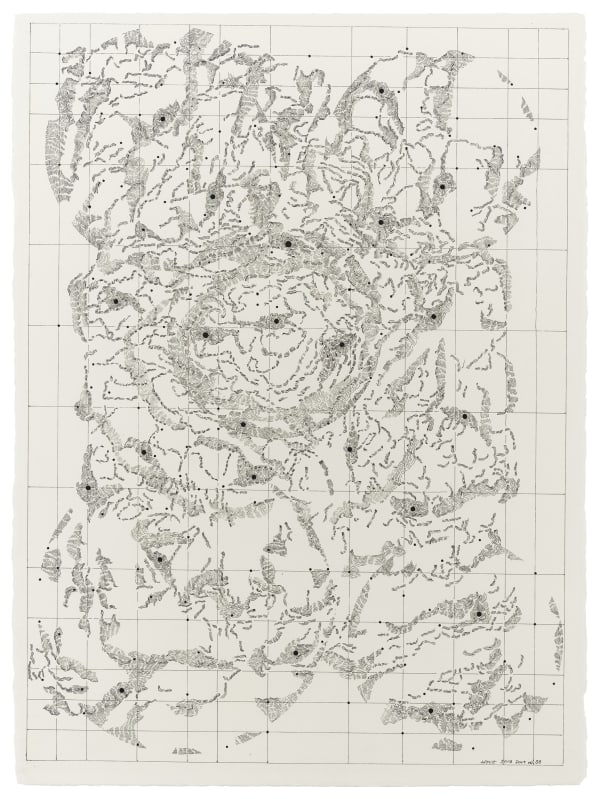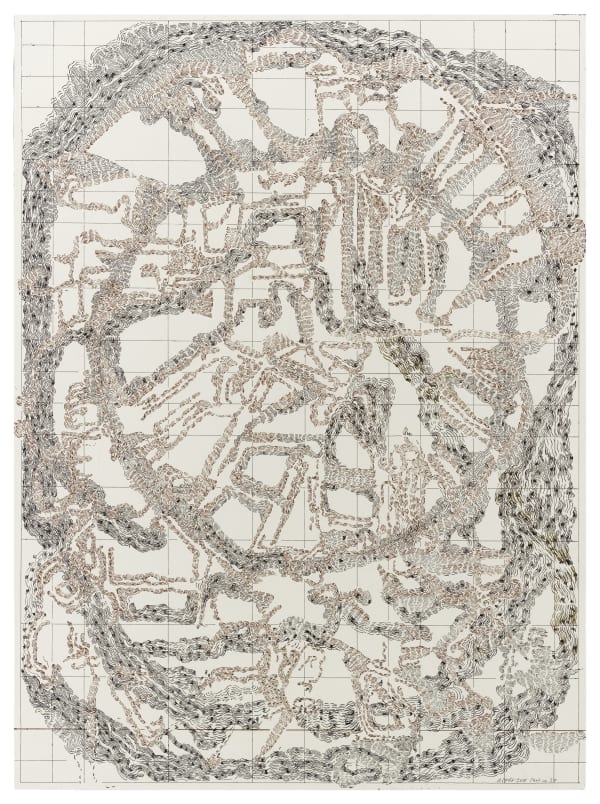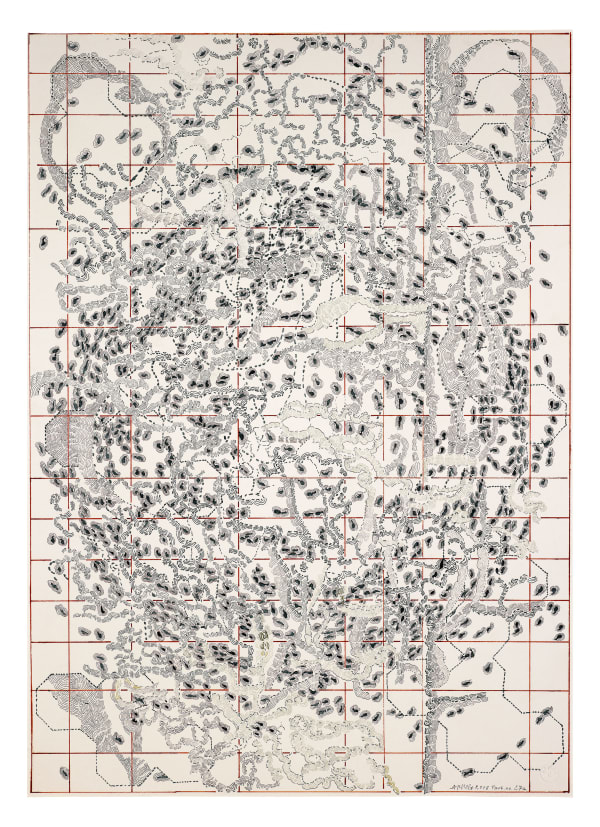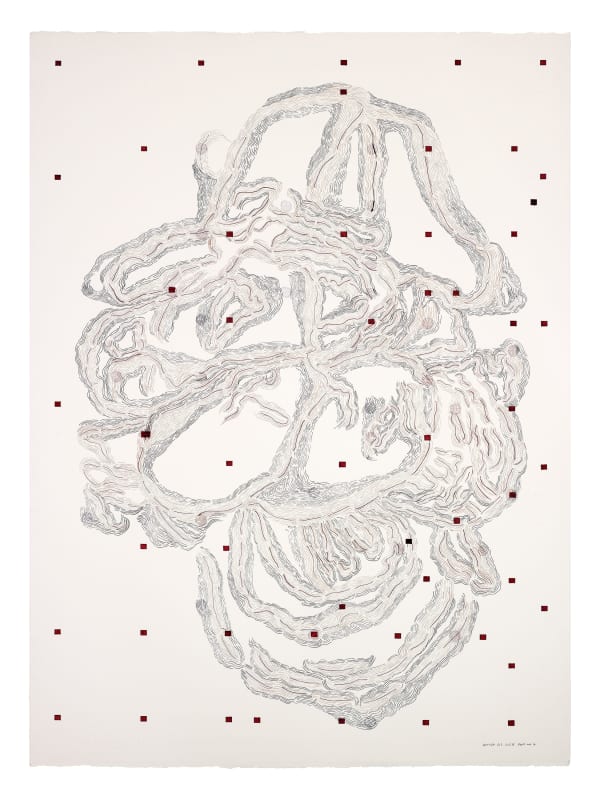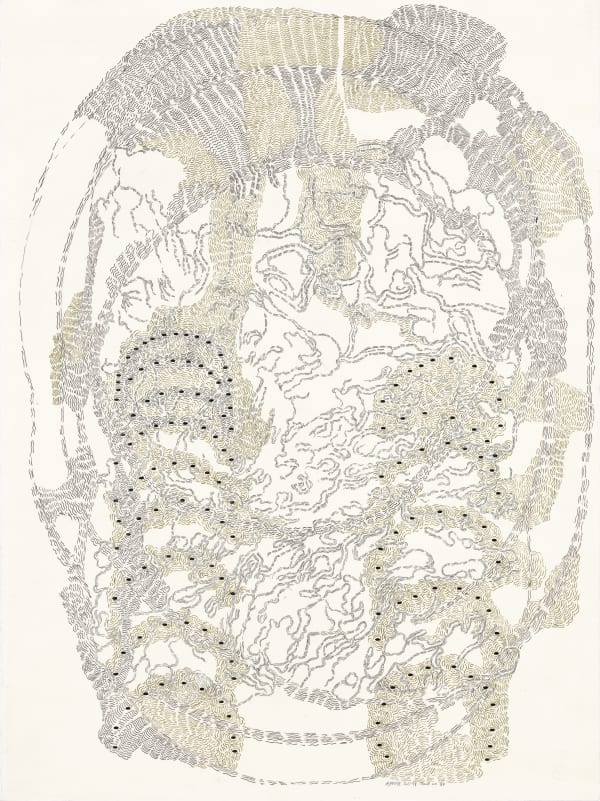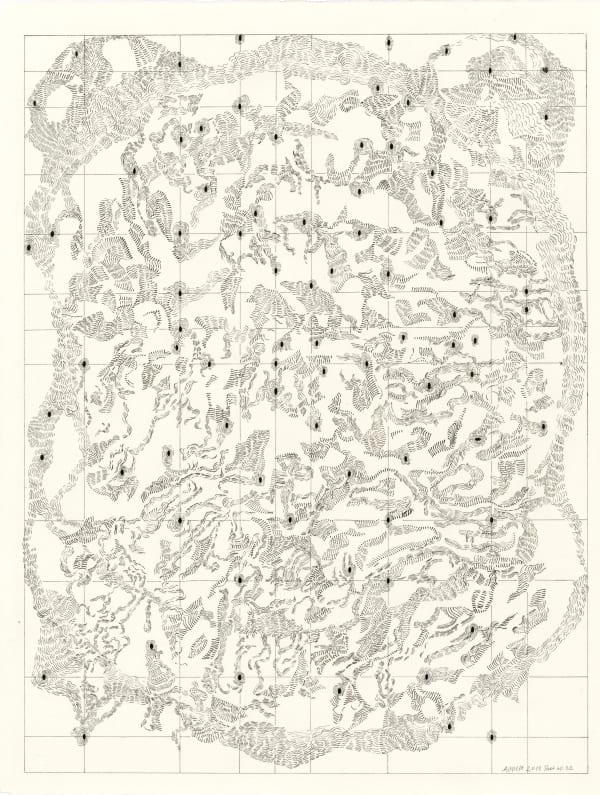SOUND FIELDS: DIETER APPELT
-
介绍
Galerie Thomas Schulte will be presenting new drawings by Dieter Appelt as of January 25, 2019. Like most of Appelt’s work, the new series, Sound Fields, is a complex mixture of essential visual, physical and musical experiences and concepts. The series explores such themes as recording, sequence, repetition and observations of space and time; themes, which have come to preoccupy Appelt’s work.
Born in Niemegk near Potsdam, Germany, in 1935, Appelt first studied music and vocals in Leipzig and Berlin, before beginning a degree in the fine arts at the Hochschule für Bildende Künste in Berlin. Despite his degree, it was not until the late 1970s that Appelt began to fully devote himself to his art, exploring various mediums including photography, film, performance art, sculpture, painting and drawing. More recently, Appelt’s main medium of expression has been drawing. In his metrically-structured ink drawings, fine, flowing lines rhythmically merge into swirls and cloud-like formations, which are arranged, overlaid and accented by colorful dots and cuboids. Through Appelt’s cartographic aesthetic, the delicate and precise hand-drawn ink strokes form structures that represent complex yet highly reduced processes and phenomena.
His drawings allow Appelt to explore the possibilities of dissolving seemingly rigid lines, setting them in motion and transforming them into sound. The open and simultaneously even structure of the colored accents and void spaces dictates a rhythm. And, just as the titles suggest, the drawings’ underlying grid of horizontal and vertical lines, leads the viewer to interpret each work as a musical score. The score references repetition and variation within composition. While readability is ensured through grid lines in some drawings, in others, dots, aggregations, and ramifications set the rhythm.
“Dieter Appelt fuses the musical and cinematic concept of score with that of notation, often using them synonymously. Appelt interprets the concept of notation as a space-time form, and therefore also as a diagram. For this reason, he can easily interpret photography, drawing and printing as forms of notation – as the pilot study and the finished work.” (Angela Lammert) Here, notation refers to an arrangement of events within time and space.
In 2018, two of the pieces in the present series were premiered in a concert by the Berlin Sonar Quartett at Radialsystem. In the current exhibition at Galerie Thomas Schulte, three of his drawings have been computerized and transformed into pieces of music.* This ties into his earlier photographic and cinematic works, such as his 1987 piece, Die Abhörung des Waldrandes, which was set to music through a mainframe computer.
The acoustic transformation of drawing is rooted in Appelt’s experience with and fascination for machanical methods. Appelt was inspired and enabled to translate drawings into sound sequences through the development of the computer-based musical composition program (UPIC) by architect and musician Iannis Xenakis in the 1960s. “As an operator he notes, repeats, layers, and translates actual occurrences into images – be it through the motor function of the line or through the mechanicalness of the photographic process.” (Angela Lammert)
In his work, Appelt creates structures, which are to be translated into other mediums. In so doing, he is able to connect the past and the present, which Appelt sees as pictorially rather than temporally related. His works involve profound explorations of ideas of nature and technology, silence and movement, life and death. Existential questions are brought into conversation with musical parameters, while placing time at the center. Harmony and counterpoint, metrics and rhythm, horizontally and vertically measured data. Musicality is however not always audible. Instead, it can provide a harmonic model that sets the pace for the passage of time. (Herbert Köhler)
*For the exhibition “Sound Fields”, the artist Yannick Hofmann has set three graphic scores by Dieter Appelt to music Partitur No. 27b, Partitur No. 34 and Partitur No. 52. As part of a computer-based process, Appelt’s pen drawings are first digitalized and turned into a grayscale image with inverted colors. It is rotated counterclockwise by 90°, these digitizers are on a right-handed Cartesian coordinate system upon which the X-axis represents time and the Y-axis represents the tonal frequency spectrum. The graphic score is then read by the program along the X-axis and synthesized into a digital waveform. The positions of pixels on the Y-axis at time X correlate with the frequencies (pitches) of the synthesized vibrations and the light-dark values of the pixels correlate with their amplitude (volume): The brighter the pixels, the louder the amplitude of the vibrations. Sounds, tones, and noises are made up of frequencies which humans can perceive in the audible range of approximately 20 Hz to 20,000 Hz (20 kHz). The settings of the three present scores were a spectrum from 20 Hz to 1 kHz (low bass, upper bass, fundamental and midrange), which is about the frequency range from the lowest tone of an electric bass up to the highest tone of the highest brass instrument, the trumpet.
Yannick Hofmann (born 1988 in Offenbach am Main) is an interdisciplinary artist and curator. He works at the ZKM | Center for Art and Media Karlsruhe as project leader in the Research & Production and teaches at the Media Arts & Sciences Department at the Hochschule Darmstadt. -
作品
-
安装图示
-
Inquire about works by Dieter Appelt

-
视频
-
参展艺术家





